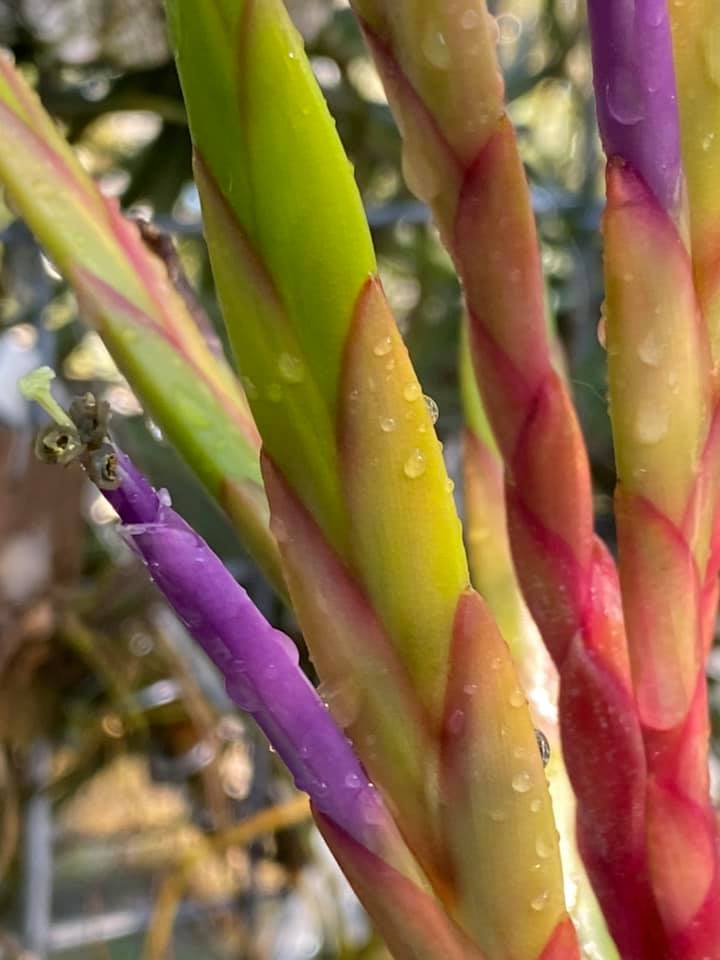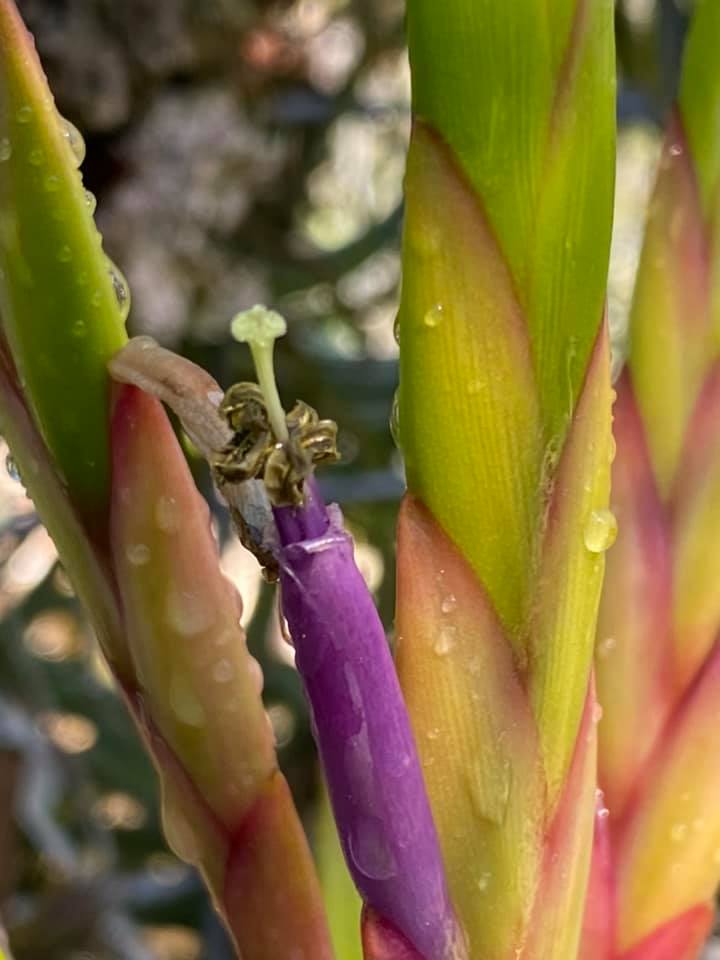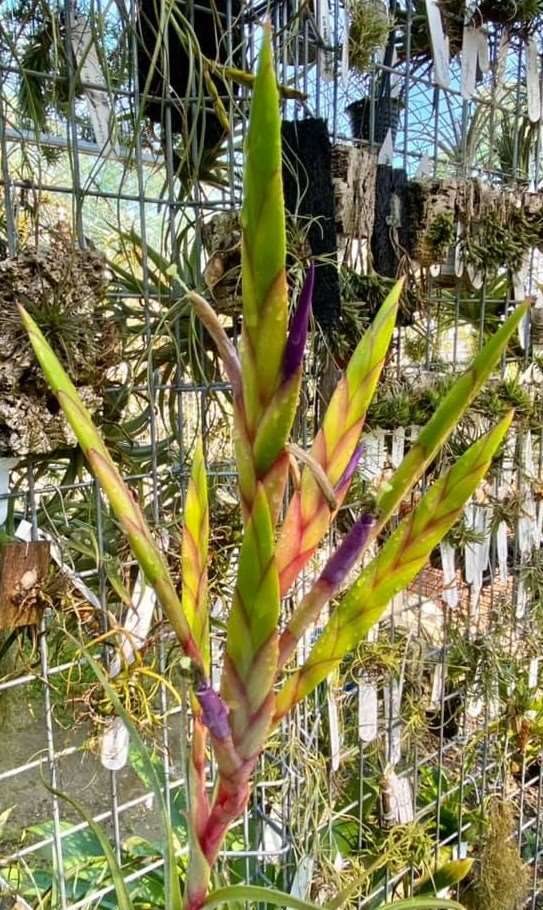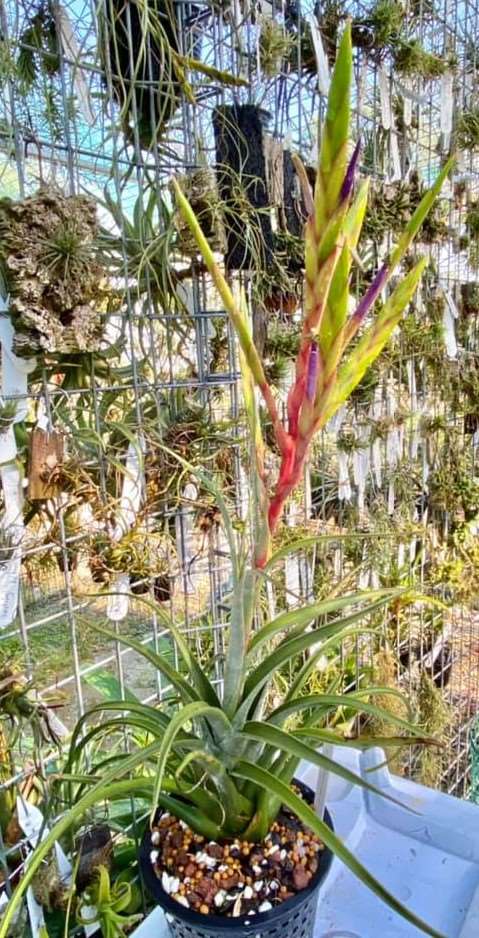




Plant stemless, flowering to 51 cm high.
Leaves thick, covered with coarse, closely appressed cinerous scales;
Sheaths large, broadly ovate, forming an ovoid or ellipsoid pseudobulb 7-10 cm long, merging gradually into the blades, the outer sheaths much reduced and bladeless;
Blades involute, narrowly triangular, somewhat recurved, slightly contorted, 11-29 cm long and 2 cm wide.
Scape erect, stout, glabrous, colored cherry to ruby;
Scape-bracts imbricate, foliaceous, lanceolate, the blades arching-recurved, slightly contorted, appressed lepidote.
Inflorescence bipinnate from a few spikes;
Primary spikes suberect, narrowly lanceolate or sublinear, 15-19 cm long, 1.5 cm wide; rachis glabrous, colored as scape.
Floral bracts imbricate and covering the rhachis, lanceolate, acute or submucronate, 3.5 to 4.5 cm long; terminal bracts citron green when immature, mature bracts varying from brick red to salmon, exceeding the sepals, 4-6 times as long as the internodes, straight toward apex, slightly, if at all, carinate, coriaceous with a hyaline margin, more or less nerved. glabrous. lustrous.
Sepals linear-lanceolate, acute, 28-31 mm long, 3 mm wide, thin except the subcoriaceous base, nerved, posteriorly carinate and connate for 1/2 or more;
Petals tubular-erect, 5 cm long, lavender;
Stamens and pistil exserted.
Type: P. Isley (holotype SEL), without specific locality, El Rancho, Guatemala. Included in a shipment of plants to the United States in 1977.
Etymology: The specific name honors Mrs. William B. Wisdom of New Orleans, a founding member of the Greater New Orleans Bromeliad Society.
T. X wisdomiana Isley, hyb. nov. forms a beautiful intermediate between the sympatric T. xerographica Rohweder and T. paucifolia Baker.
Although this plant is much larger than T. paucifolia, the base has the bulbous shape common to the group that also includes T. caput-medusae Morren, T. butzii Mez, and T. bulbosa Hooker.
Because of the spreading and contorting leaf influence derived from T. xerographica, this plant at first appears to have T. caput-medusae as one of its parents rather than T. paucifolia. That condition is not considered likely because the former does not overlap its habitat range with T. xerographica in the El Rancho region as does T. paucifolia.
The pseudobulb of T. x wisdomiana is like that of T. paucifolia, but more ovate, suggesting the influence of T. xerographica. T. x wisdomiana more closely resembles T. paucifolia than T. xerographica with its broad, ovate pseudobulb, the narrowly triangular and involute leaf blades, and blunted, soft leaf tips. The scape and inflorescence are, however, similar to T. xerographica, but much reduced in size.